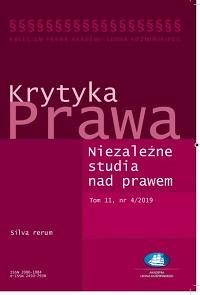Testamentum holographum
Marek Kuryłowicz
Akademia Leona Koźmińskiego
3/2015 7 (1) Krytyka Prawa. Niezależne studia nad prawem
DOI 10.7206/kp.2080-1084.82








